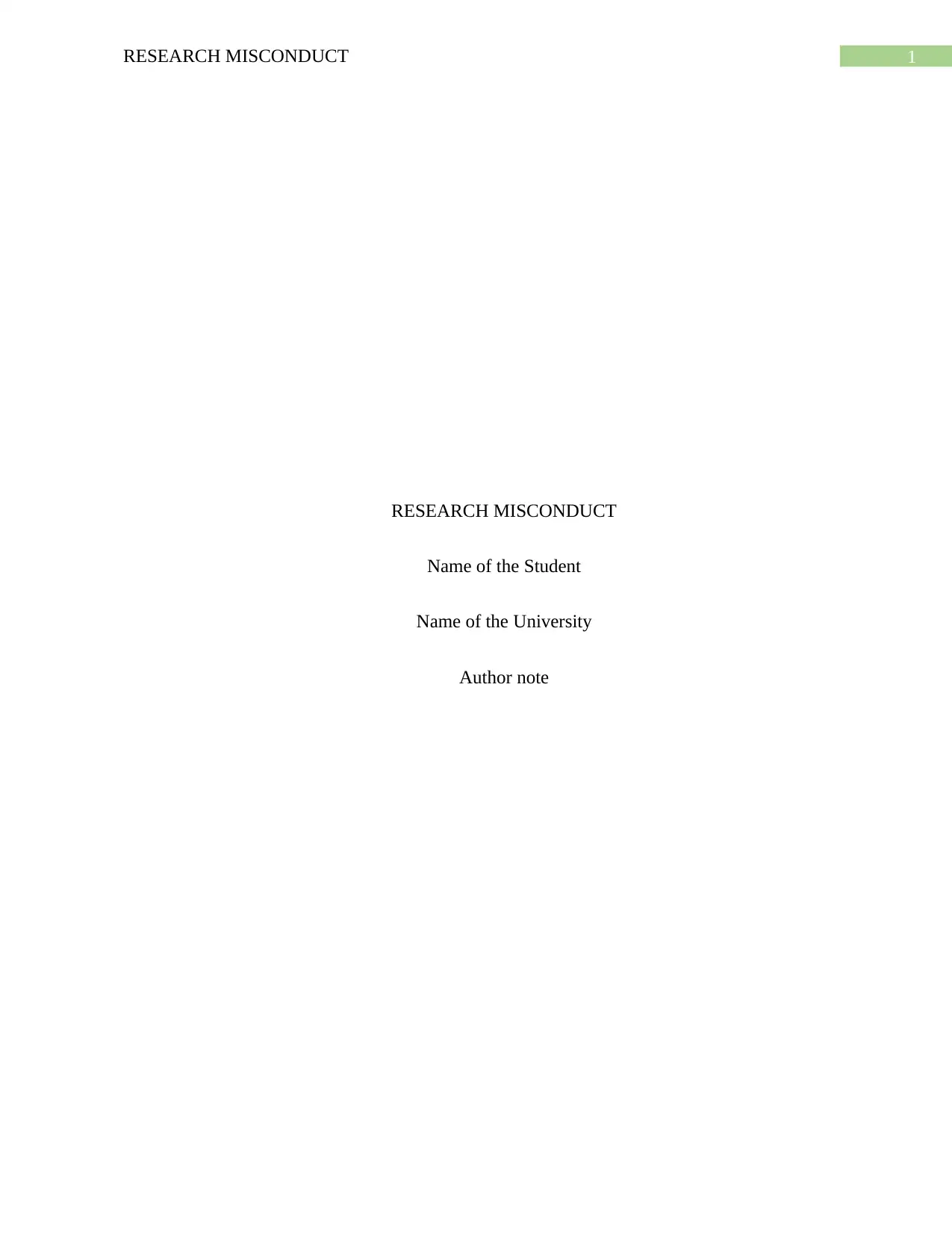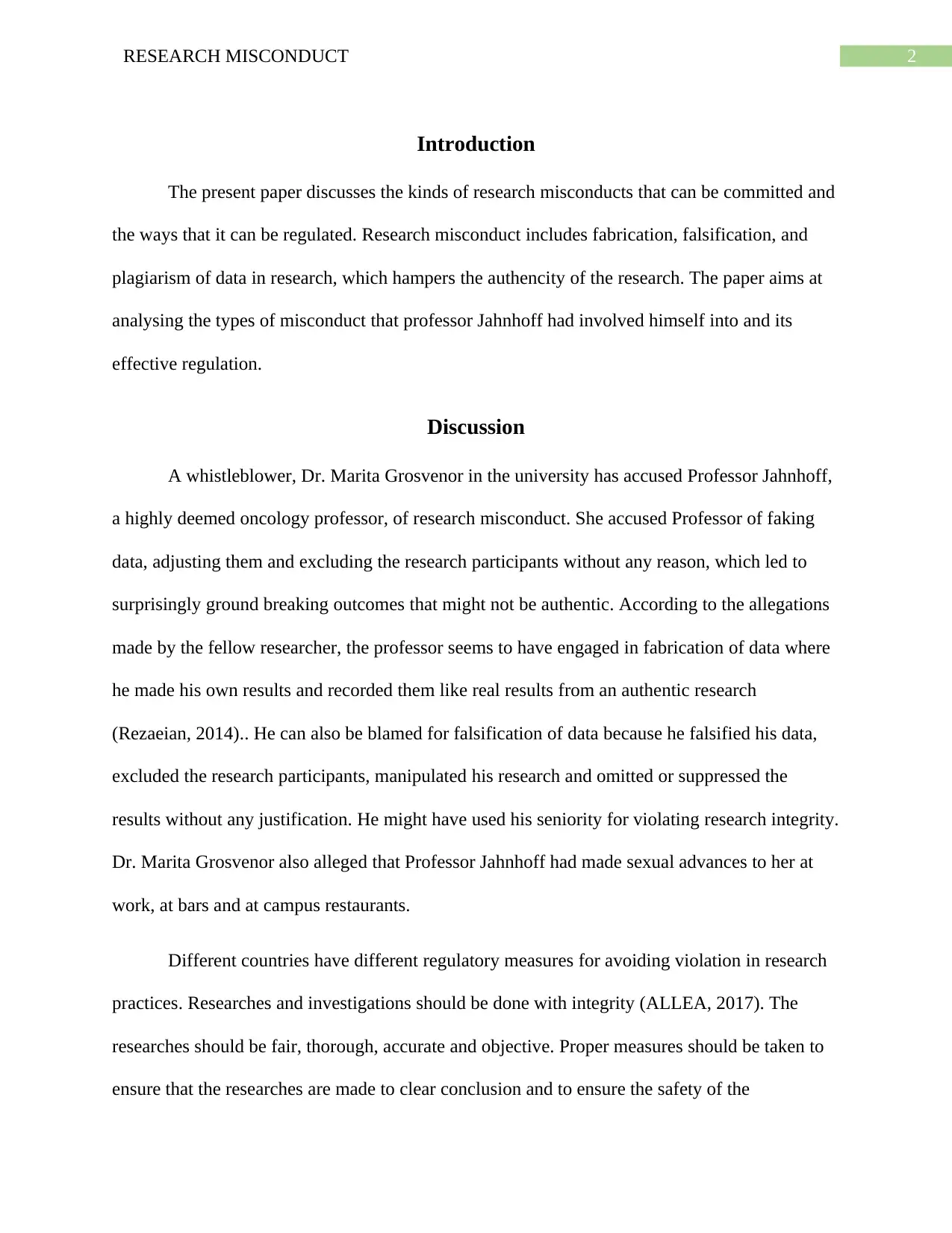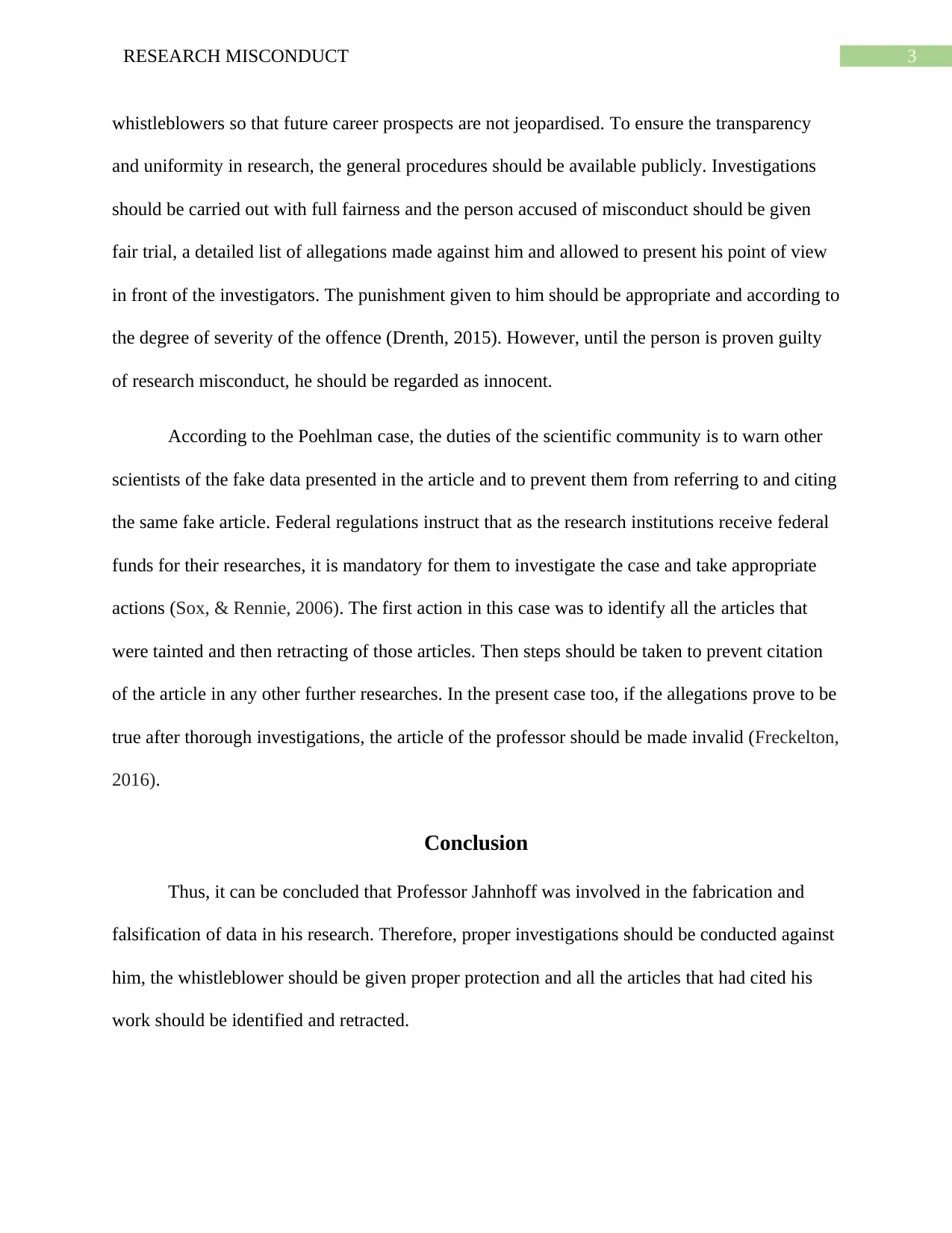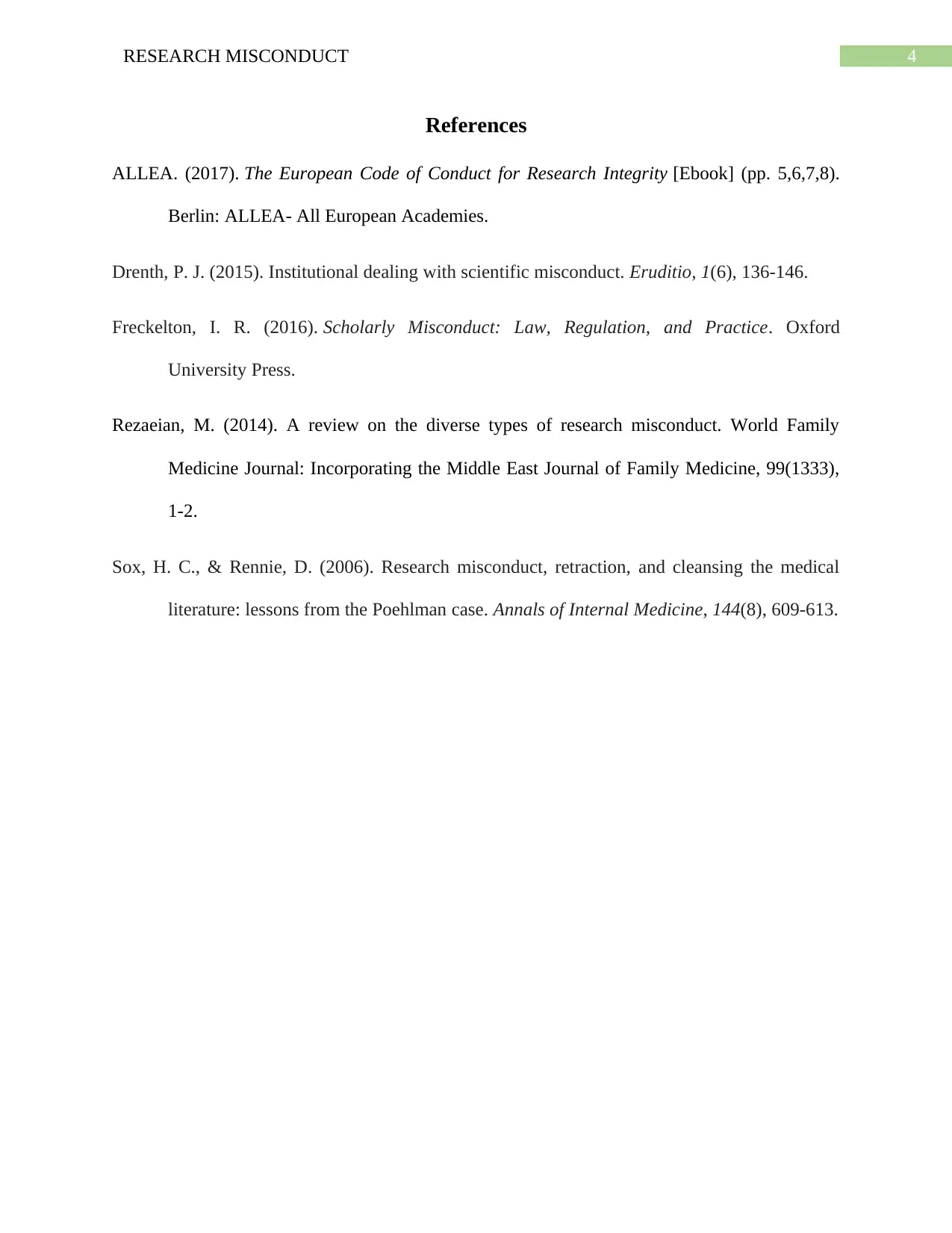Research Misconduct: Analysis of the Jahnhoff Case Study
VerifiedAdded on 2022/08/25
|4
|784
|18
Report
AI Summary
This report analyzes the case of Professor Jahnhoff, a highly regarded oncology researcher at Chalkman University, accused of research misconduct. The allegations include data fabrication, falsification, and the exclusion of research participants, potentially leading to groundbreaking but inauthentic results. The report explores the types of misconduct involved, referencing ALLEA's European Code of Conduct and other relevant literature. It emphasizes the importance of fair investigations, whistleblower protection, and the retraction of tainted articles. The analysis also covers the role of regulatory bodies and the scientific community in addressing research misconduct, as well as the need for transparency and uniformity in research practices. The report concludes that Professor Jahnhoff was likely involved in data fabrication and falsification, and recommends thorough investigations and appropriate actions to ensure research integrity and protect whistleblowers.
1 out of 4










![[object Object]](/_next/static/media/star-bottom.7253800d.svg)